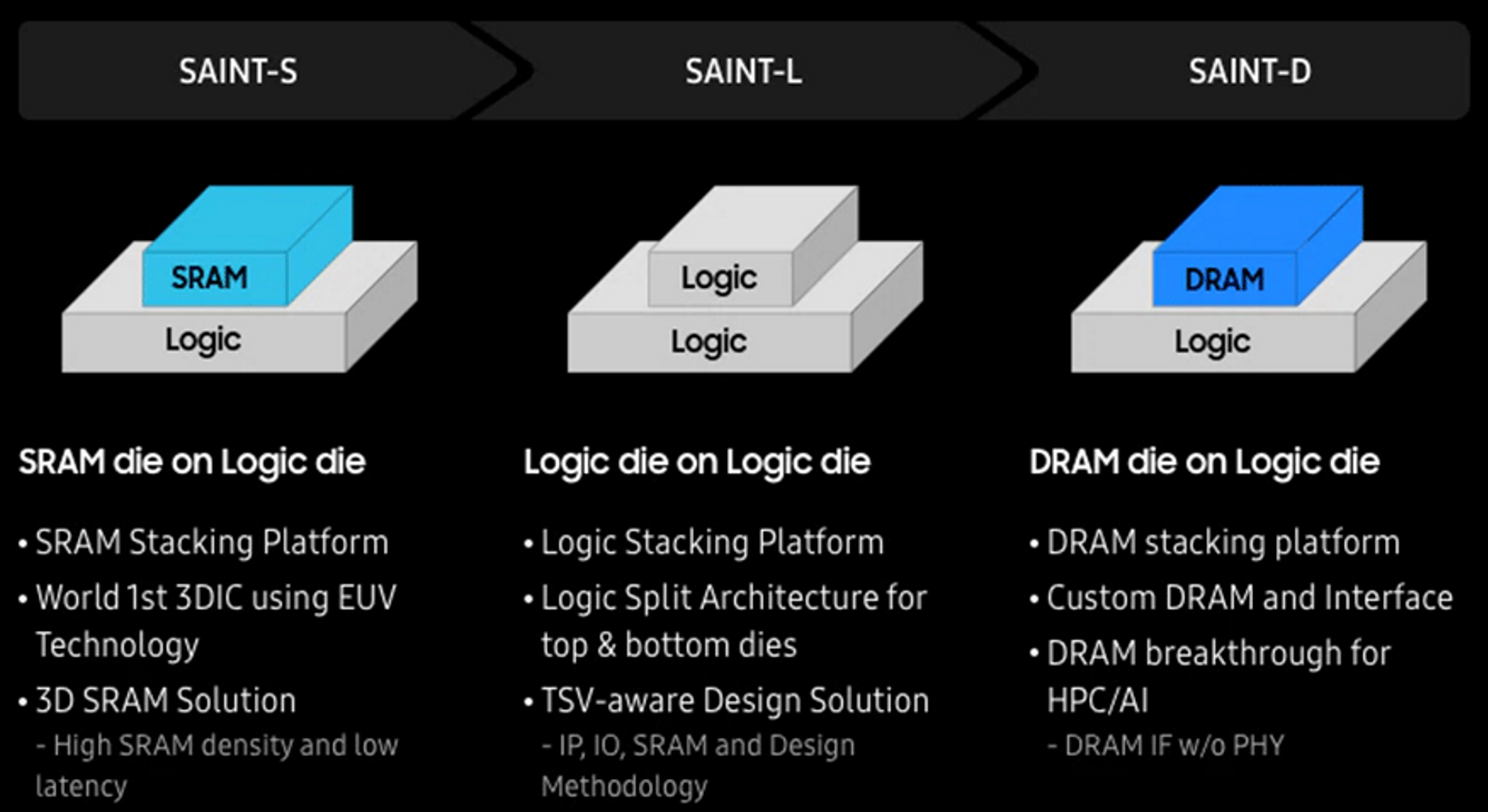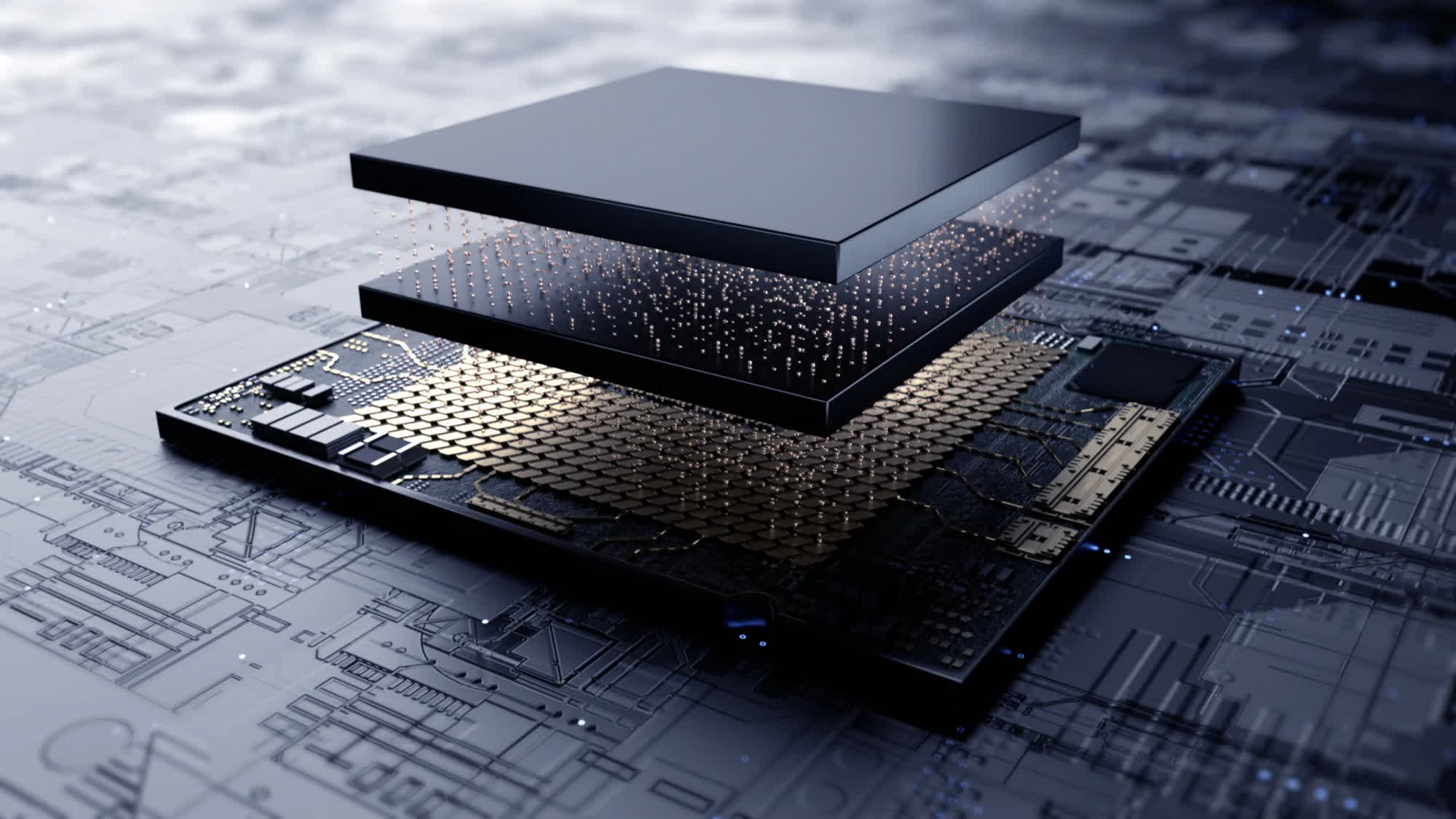Forward-looking: Major chipmaking companies have been trying to stack different kinds of silicon components onto each other for quite some time. Now, Samsung is apparently ready to debut a significant advancement that integrates logic chips with high-bandwidth RAM.
Samsung introduced its newest and most advanced chip packaging technology and service roadmap during the Samsung Foundry Forum 2024 event. According to unnamed industry sources quoted by the Korea Economy Daily and Samsung's own statements, the new tech will debut in fourth-gen high-bandwidth memory due out in 2025.
Samsung's new stacking solution represents a significant advancement in chip design. It is the first 3D packaging technology officially introduced by the world's largest memory manufacturer and one of the few companies with the expertise and tools required to produce such advanced chips. Current stacking technologies are based on a "2.5D" design, where the HBM memory chip connects horizontally to the underlying logic chip (mostly GPUs) via a silicon interposer.
The 3D packaging technology developed by Samsung seemingly eliminates the need for an interposer, enabling "true" vertical stacking between the memory chip and the logic silicon components. However, creating a 3D packaging design requires a new base die for HBM memory, introducing a much more complex process technology into the equation.

Samsung's 3D packaging solution is based on a platform known as SAINT, or Samsung Advanced Interconnect Technology. The tech has been in development for years and includes different approaches for different types of silicon. The SAINT-S solution is for SRAM die on logic die stacking, SAINT-L is for logic die on logic die stacking, and SAINT-D is for DRAM die on logic die stacking.
Thanks to 3D packaging, future GPUs will provide faster data transfer rates, cleaner electric signals, reduced power consumption, and lower latency levels. However, the 3D packaging solutions will also come at a higher cost, and Samsung is apparently interested in offering them as a "turnkey" service to sell more HBM chips to interested customers.
The Korean corporation is expected to finalize the SAINT-D process this year, with HBM4 memory technology arriving next year. Companies developing AI accelerators, particularly Nvidia, are Samsung's main business targets for the new technology, according to Korea Daily. However, SAINT-D will require a chip redesign effort that no known company is currently working on.
